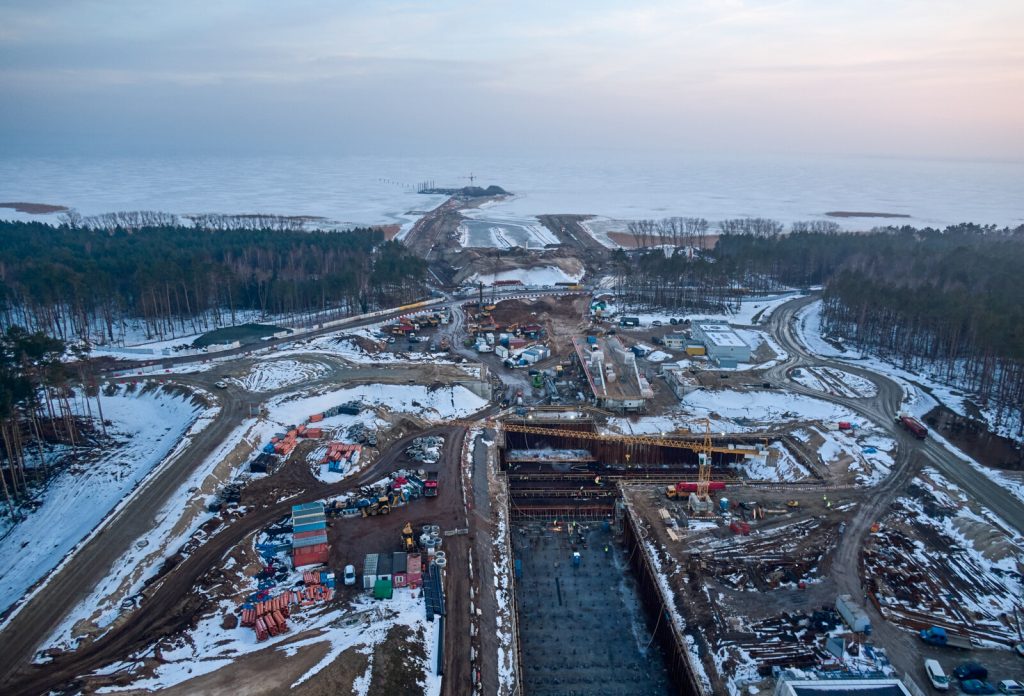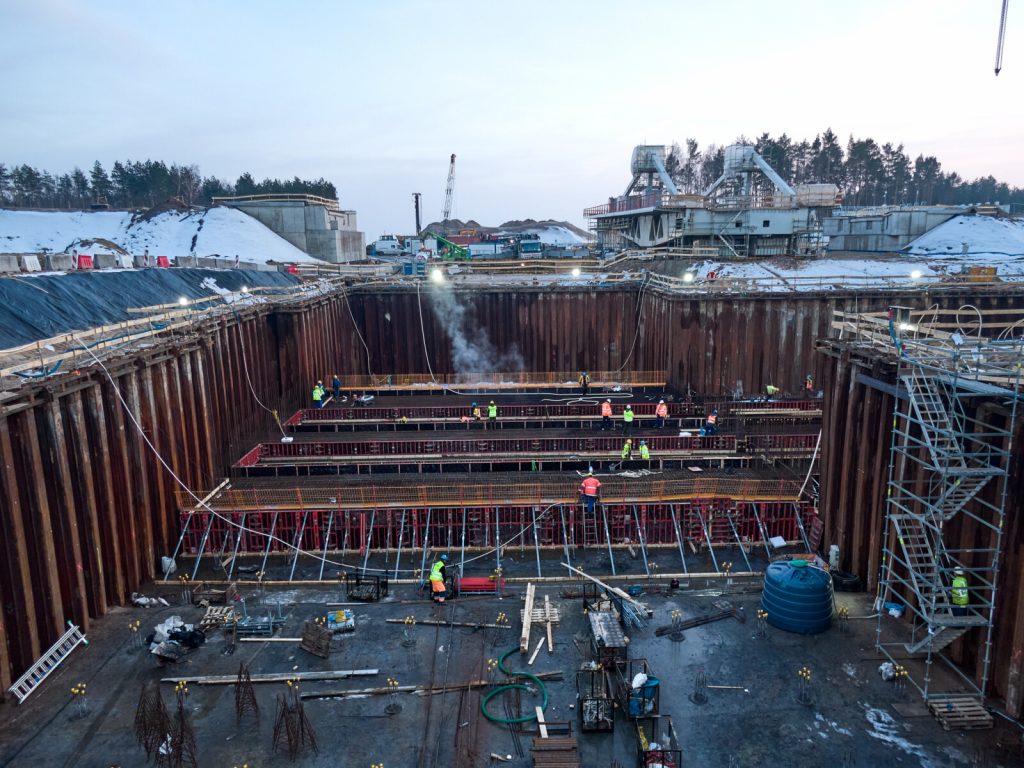

The first concreting on the lock is behind us
Last week, the contractor of the first stage of the construction of the shipping channel through the Vistula Spit, the NDI/Besix consortium, started reinforced concrete works on the lock. Exceptionally, the works were carried out at night, due to the logistics and the influence of concrete binding on the structure of individual elements of the lock.
Works on the Vistula Spit, despite the winter weather in February, are progressing according to the schedule. Their spectacular element was the first concreting, which took place at night. The bottom slab of the southern gate of the lock was concreted. During the works, almost 1,700 m3 of concrete and over 170 tonnes of reinforcing steel were built into it.
-Concreting took over a day, – says Paweł Ciomek from the NDI/Besix consortium. “This is the beginning of reinforced concrete construction works in the area of the lock. Ahead of us is another concreting of sections in the channel, then the southern gate of the lock and then the walls forming a sealed reinforced concrete tank, i.e. the final structure of the lock, – adds Paweł Ciomek.



The first concreting on the lock will allow for the construction of a reinforced concrete pocket of the lock gates, and, consequently, for the assembly of steel lock gates on the southern gate. Thanks to concreting the slab of the lock’s gate, the contractor, the Polish-Belgian consortium NDI/Besix, can also proceed with the construction of the bottom slab in the lock’s channel. This concreting is the beginning of reinforced concrete works at the lock, where about 20,000 m3 of concrete and about 1,900 tonnes of steel are planned to be incorporated. Depending on the weather, builders plan subsequent concreting at night in order to minimise the influence of the heat of cement hydration during concrete setting on the structures of individual elements of the lock.
The lock is necessary to ensure safe navigation in conditions of changing water levels on both sides of the Vistula Spit. Additionally, the lock will act as a barrier preventing the mixing of saltwater from the Baltic Sea with the freshwater of the Vistula Lagoon. The lock heads on both sides will be equipped with double gates, which will be moved into recesses (pockets). As a consequence, the amount of water that reaches the Vistula Lagoon will be small, and its impact on the dynamics and salinity of the waters of the Lagoon will be short-term. The range of this impact will be merely local.



Technical parameters of the lock:
chamber length: 200.0 lm
width: 25 m
anchor bottom: 10,000 m2
depth: -6.50 m
crest elevation: +2.50 m
Currently, among others, the following works are continued at the construction site: profiling of slopes, erratic works and reinforced concrete works on the breakwaters of the Outer Port. The production, delivery and installation of X-block plus concrete elements intended for the protection of the breakwaters are carried out. Works related to reinforcement and concreting are performed in the lock. In the shipping channel, the driving of sheet piling, execution of micropiles and concreting works are underway. Work is also being carried out on both bridges as well as finishing works in the harbourmaster’s office building. After thawing of the Vistula Lagoon, further driving of the cofferdam wall, creating the boundaries of the artificial island, is planned, as well as the installation of ties and cofferdam fillings.



Author:
NDI Group
Last Updated on March 19, 2021 by Karolina Ampulska